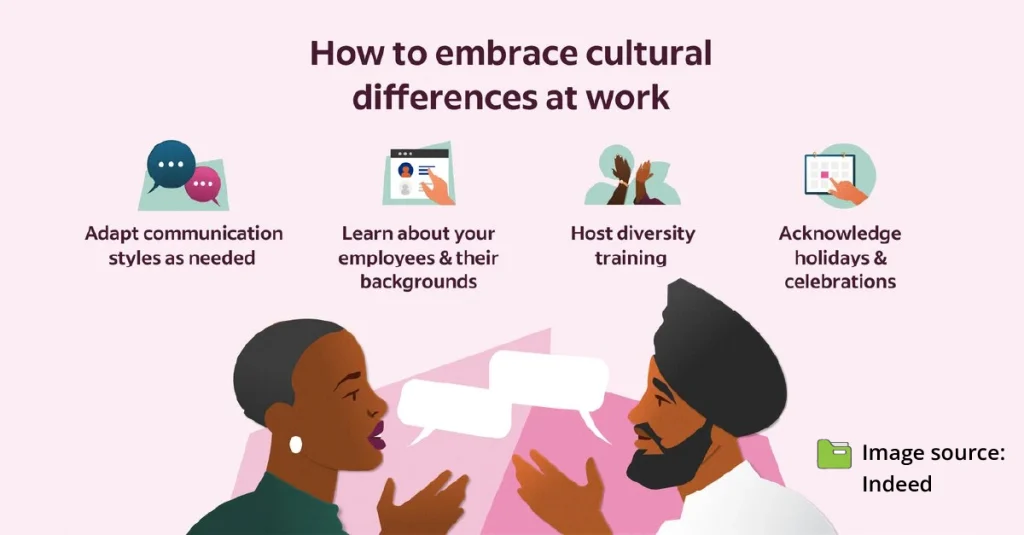Consider this: Two friends are out together, and one of them buys the other a bottle of water. Later, they ask their friend to pay them back.
In some cultures, this seems perfectly normal. In others, it might come across as odd or even rude. What makes the same situation feel so different across cultures is cultural nuance.
Taking these nuances into account is a crucial, but often overlooked, part of the translation process. In this article, we’ll define cultural nuances, share real-world examples, and explore how they can make or break a global campaign.
What Are Cultural Nuances?
Cultural nuances are the social norms and subtle communication styles that set one culture apart from another. They are usually shared knowledge among people within the same cultural group. These nuances show up in language, mannerisms, humor, social norms, cultural etiquette, and more.
Two Types of Cultures
Cultures can be categorized into two types: high-context cultures and low-context cultures.
A high-context culture, like Japan’s, is one where communication and social rules are understood implicitly. It relies on non-verbal cues, tone, and shared knowledge.
In contrast, a low-context culture, such as that of the United States or Germany, is more direct and explicit. People say exactly what they mean, leaving little room for interpretation.
Non-Verbal Communication: Cultural Differences in Body Language
From eye contact to hand gestures, body language varies widely across cultures. Even when the same gesture exists in multiple cultures, it can carry completely different meanings.
For example, nodding your head to show agreement actually means “no” in Greece, Bulgaria, and Turkey. Italians are known for being very expressive with their faces and hands while speaking, whereas in many Asian cultures, it’s considered more polite to keep facial expressions and gestures more restrained.
In Germany and some other European countries, staring is generally acceptable. It’s often seen as a sign of being observant or engaged in a conversation.
But in many Middle Eastern countries, staring is considered impolite. It can also carry religious significance; within Islam, Muslims are advised to lower their gaze as a sign of respect and modesty.
Cultural Dimensions Theory: Hofstede’s Blueprint
Dutch social psychologist Geert Hofstede developed the Cultural Dimensions Theory, which outlines six key factors for understanding and comparing cultures:
- Power Distance: The extent to which hierarchy and unequal power are accepted, often based on age, status, or titles
- Individualism vs. Collectivism: Whether a culture values personal independence or strong group and family ties
- Masculinity vs. Femininity: A focus on achievement, competition, and material success (masculine) vs. cooperation, care, and quality of life (feminine)
- Uncertainty Avoidance: How comfortable a culture is with ambiguity and risk vs. a preference for rules, structure, and predictability
- Short-Term vs. Long-Term Orientation: A focus on immediate results and quick rewards vs. long-term planning, persistence, and future success
- Indulgence vs. Restraint: The degree to which people seek enjoyment and gratification vs. the regulation of desires through social norms.
Avoiding Pitfalls and Building Cultural Intelligence
The Cost of Cultural Misunderstandings
When entering a new market, overlooking cultural nuances can lead to serious mistakes. A well-known example is Mercedes-Benz’s launch in China. The company attempted to localize its name to “Bensi” to appeal to Chinese consumers. However, they failed to realize that “Bensi” roughly translates to “rush to die” in Chinese, a message no car manufacturer wants to associate with.

In contrast, a successful example of a culturally aware campaign in China is Lululemon’s “Wellbeing for All” campaign, launched in 2022 to celebrate World Mental Health Day. The brand shared wellness tips in Chinese and promoted the campaign through WeChat, China’s most widely used social media platform. By aligning with local values and communication channels, Lululemon effectively connected with its target audience.

Cultural Nuance in Business Etiquette
Cultural nuance plays a big role in business etiquette, too. In Dubai, for example, people observe prayer times and may take midday breaks to pray. The business environment tends to be cordial, respectful, and conservative.
In Germany, punctuality is highly valued. Being even five minutes late can be seen as disrespectful, as sticking to schedules and systems is important.
Providing cultural training for your teams can go a long way in helping them navigate these differences and build stronger business relationships.

How to Approach New Markets
“Localization isn’t a checklist—it’s a conversation. You must engage trusted cultural insiders who live the nuance, not just language experts. They will flag blind spots you didn’t know existed and surface opportunities you couldn’t Google.”
Janita Pannu, founder of OPIIA Inc., as featured in Forbes
Here are five key steps to successfully enter new markets with effective translation and localization:
- Invest in native-speaking translators to ensure your message resonates naturally with the local audience.
- Localize—not just translate—your content, including imagery, colors, currency, and cultural references.
- Research cultural norms and sensitivities to avoid offensive language or messaging.
- Adapt your brand voice and tone to match local communication styles and consumer expectations.
- Test and review your localized content with native users before launch to catch any linguistic or cultural missteps.
Connect with bayantech’s Team of Native Translators
Worried your message might get lost in translation, or worse, unintentionally offend your audience? Partner with bayantech for high-quality, professional translation and localization services in any language you need.
Our team of native-speaking linguists brings years of experience in translation and localization. We ensure your message is delivered clearly, accurately, and—most importantly—with cultural sensitivity and relevance.
Start your translation project with bayantech today! Visit our services page to learn more.







